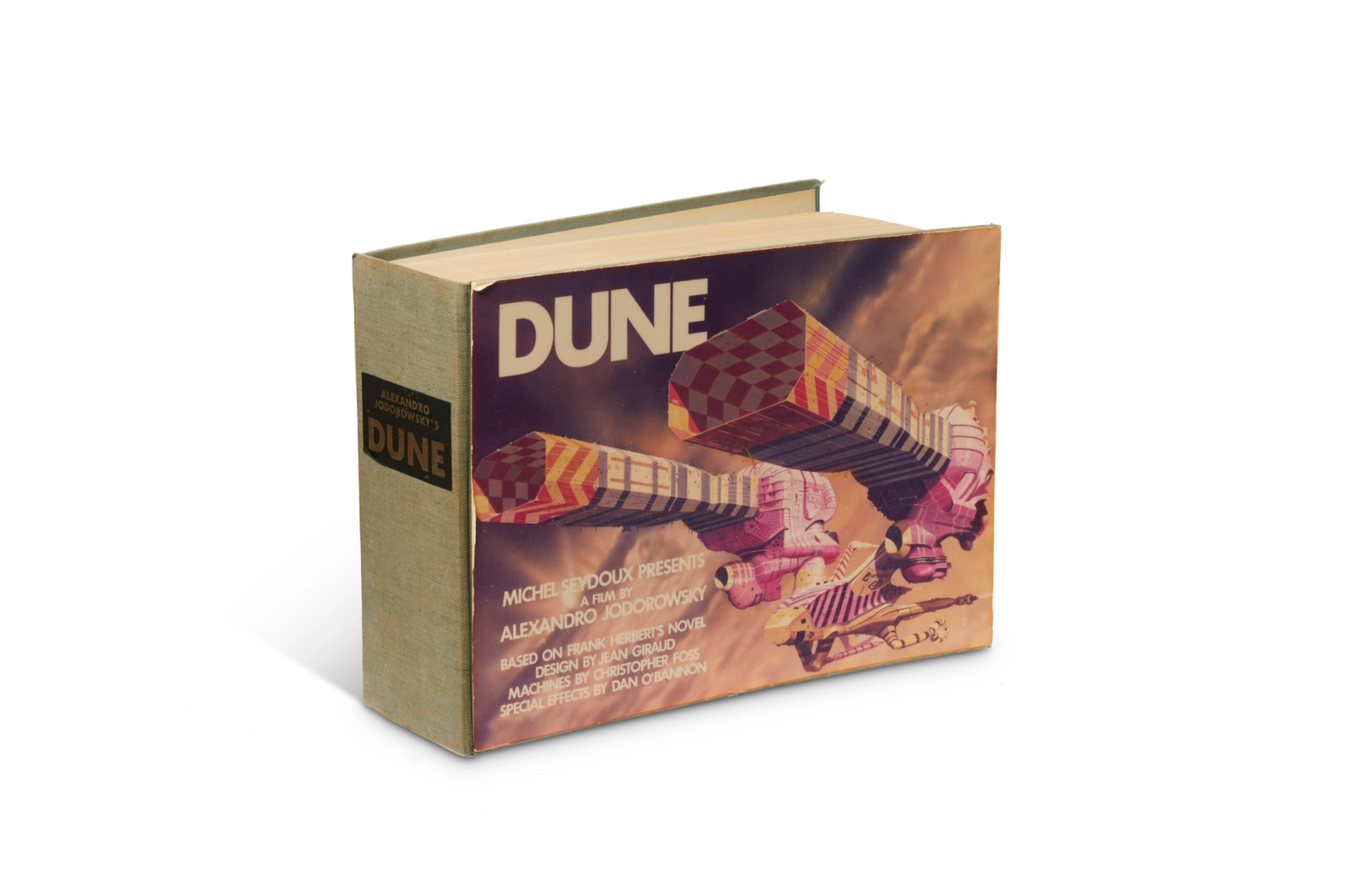18/01/2022 Crypto group shamed for spending $3m on ‘Dune’ book, mistakenly believing it had acquired copyright to produce NFTs
The group Spice DAO planned to sell NFTs based on the contents of the book, which details Alejandro Jodorowsky’s ambitious but failed adaptation of Frank Herbert’s sci-fi novel

Frank Herbert, Alejandro Jodorowsky, Jean Giraud and others, Dune (around 1975).Courtesy Christie’s.
The spice must not be flowing for members of an NFT (non-fungible token) group that spent $3m on a rare book detailing film-maker Alejandro Jodorowsky’s failed adaptation of Frank Herbert’s epic science fiction novelDune.
The book was offered in a Christie’s Paris sale on 22 November with an estimate of €25,000-€35,000 and bought for more than 100 times its low estimate (€2.6m, or $3m, including fees) by an anonymous group identified as Spice DAO (decentralised autonomous organisation), whose members mistakenly believed that the purchase granted them the copyright to the book, which they intended to splice and sell as NFTs before burning the physical copy.
The group stated that its goal is to “issue a collection of NFTs that are technically innovative and culturally disruptive, a first-of-its-kind”, and that burning the book would be an “incredible marketing stunt which could be recorded on video”, with the video itself sold as an NFT.
Spice DAO also claimed that it would digitise and make the book public, that it would produce an original animated series based on the book for a streaming service, and that it would “support derivative projects”.
Around 10 copies of the book, in which the French-Chilean director compiled his concept artwork and notes for the film, are believed to exist. The book itself became widely known after the release of the 2013 documentaryJodorowsky’s Dune, a film that chronicles the ambitious but ill-fated production, which was scrapped once it was deemed too long and too expensive.
In the mid-1970s, Jodorowsky envisioned a 14-hour film produced in collaboration with Herbert, who released the novel in 1965. Salvador Dalí was famously billed to act in the film, requesting a fee of $100,000 per hour, with Pink Floyd and others set to produce the soundtrack.
Before the French-Canadian director Denis Villeneuve released his well-received blockbuster adaptation of the novel last year,Dunewas adapted by David Lynch in 1984, but his version met with divisive reviews, with Lynch himself once expressing that there was “something wrong with that movie”.
Although never realised, Jodorowsky’s plans forDuneattained cult status among fans of Herbert’s masterpiece. While Spice DAO may have committed a $3m blunder with its plans forDuneNFTs, asDune’sReverend Mother advises in the novel: “Hope clouds observation.”
Christie’s marketed the book as “one of the most legendary objects in the history of science fiction cinema and pop culture, a precious relic of a cursed project that has inspired several generations”, which “brought together some of the greatest artists of [Jodorowsky’s] time”. Previous copies, which were circulated to producers and executives in the 1970s, have sold for around $25,000.
 (0)
(0)
 (0)
(0)
https://www.theartnewspaper.com/2022/01/17/nft-group-shamed-jodorowsky-dune-book-copyright
